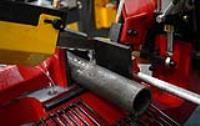 Add My Company
Add My Company
Sign In
How to Test and Treat Metalworking Fluids
25-11-2021

How to Test and Treat Metalworking Fluids
Metal Working fluids are one of the most dangerous killers in the metalworking industry.
The danger of MWF lies in its ability to release harmful lung-infecting organisms without being noticed. A welder, grinder or plasma cutter will exhume visible fumes, sparks, and vapours, but not metal working fluids. They stay happily swirling around in a sump, looking like a mixture of cream and weak coffee, do an essential job without complaining, don’t burn the fingers when handled, and offer up that old-fashioned odour, the tell-tale identity of a skilled hardworking engineer, even outside of the black country.
Fluid systems that contain water or water mixes can become highly contaminated with harmful bacteria. The bacterial contamination of fluids and associated machinery and pipework should be monitored and controlled.
So how can metalworking fluids so seriously affect us?
Irritation of the skin or dermatitis.
Lung diseases, such as occupational asthma, occupational hypersensitivity pneumonitis, bronchitis, irritation of the upper respiratory tract and other breathing difficulties.
How is this harm potentially caused?
Inhalation of mist or splash particles.
Skin contact during the preparation or draining of fluids, and handling of workpieces, especially through cuts and abrasions or other broken skin.
Through the mouth, if we do not wash our hands before eating.
Unfortunately, what follows, possibly even when an employee has already moved to other duties or left, is an illness or life changing injury. That pursuit can culminate in an enquiry under the PUWER (Provision and Use of Work Equipment Regulations 1998), and prosecution.
That is why the Health and Safety Executive, the HSE, has not only devoted a raft of guidance notices specifically on that subject but why their factory inspectors regularly home in on what to the average worker seems unimportant. HSE inspectors are currently visiting businesses across Great Britain, checking that all risk assessments and mitigations are in place.
So, what is the method of dealing with this killer? It is not a one-off fix, it is a process of management of just FIVE steps which follows the path below:
For more information on How to Test and Treat Metalworking Fluids talk to Selmach Machinery Ltd
Enquire Now
List your company on FindTheNeedle.

